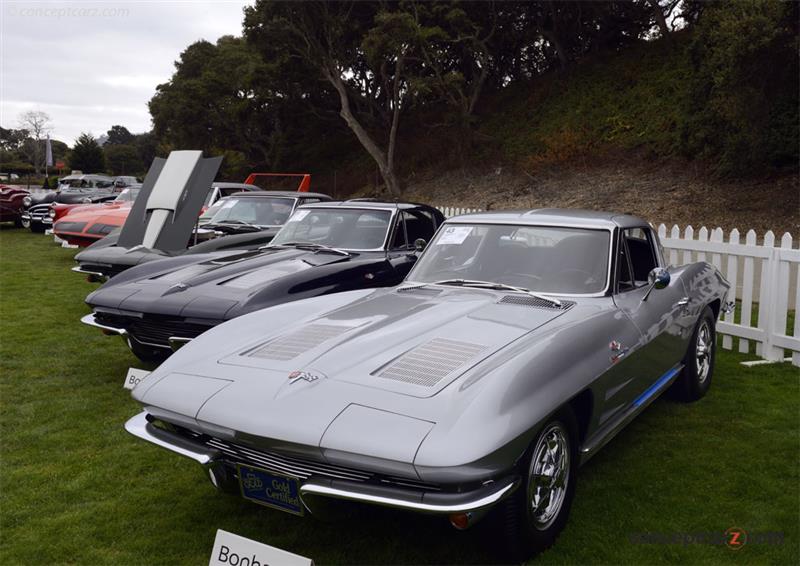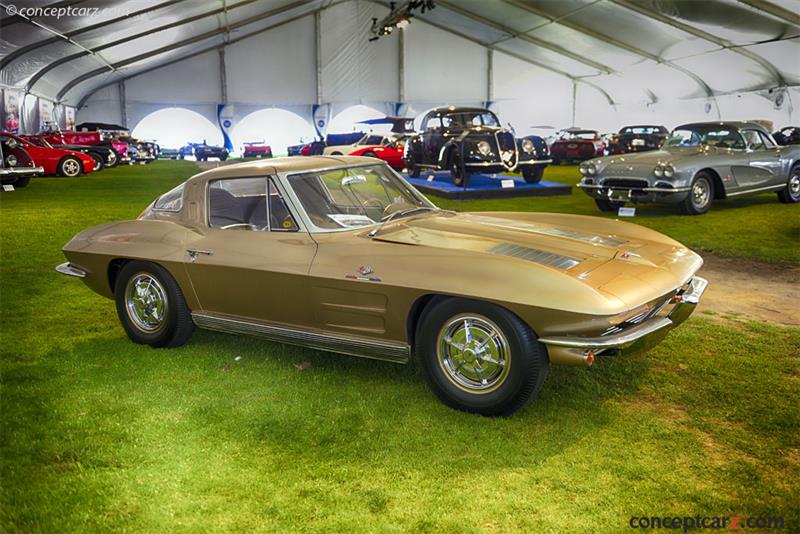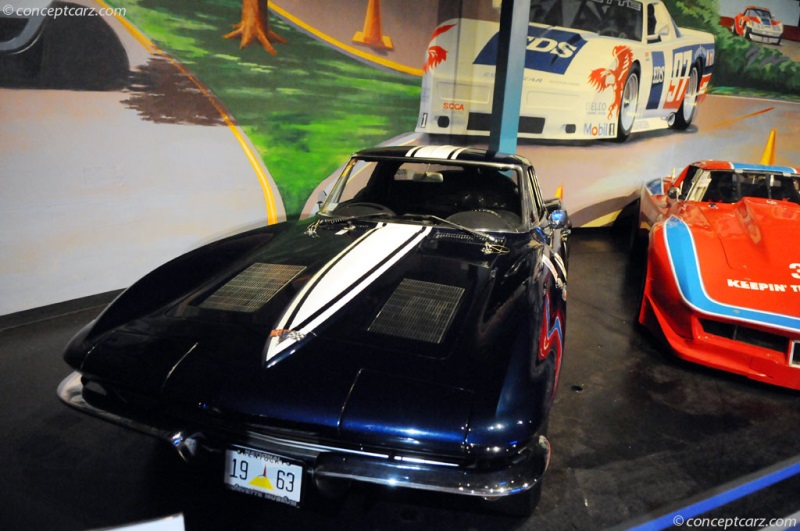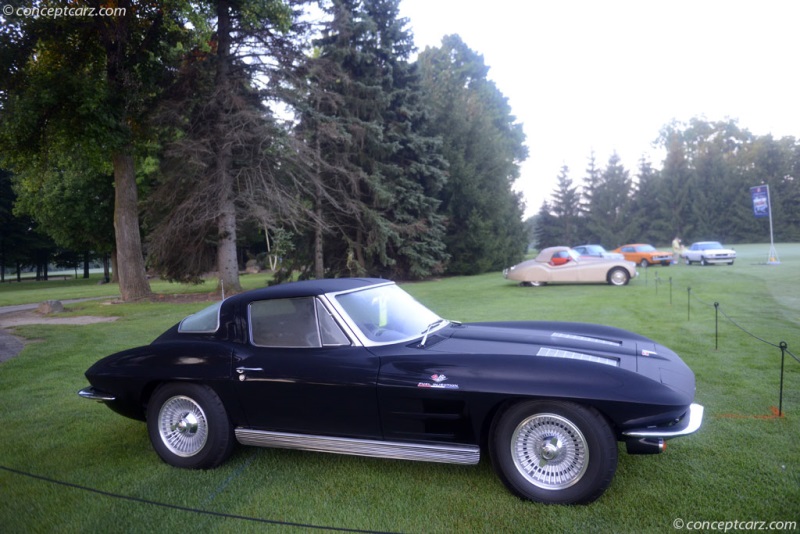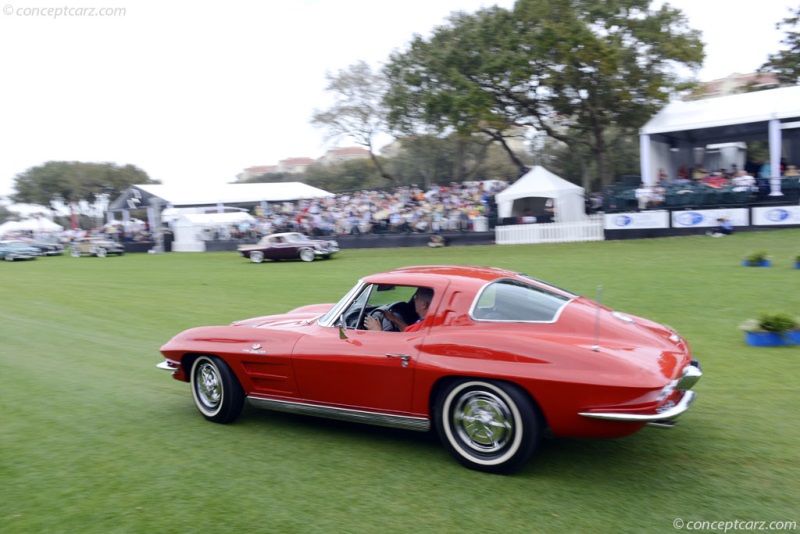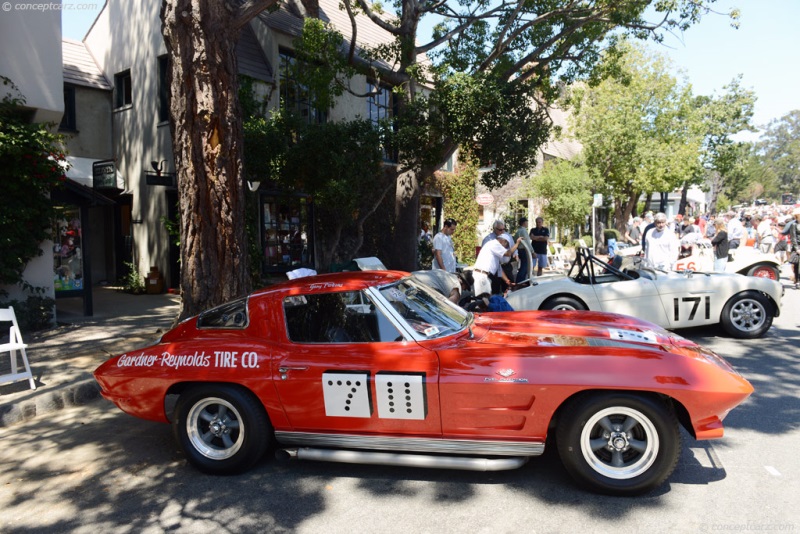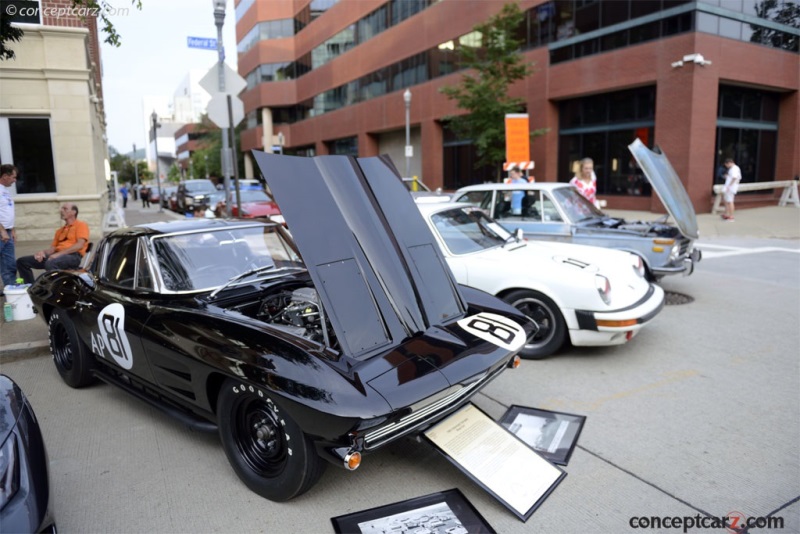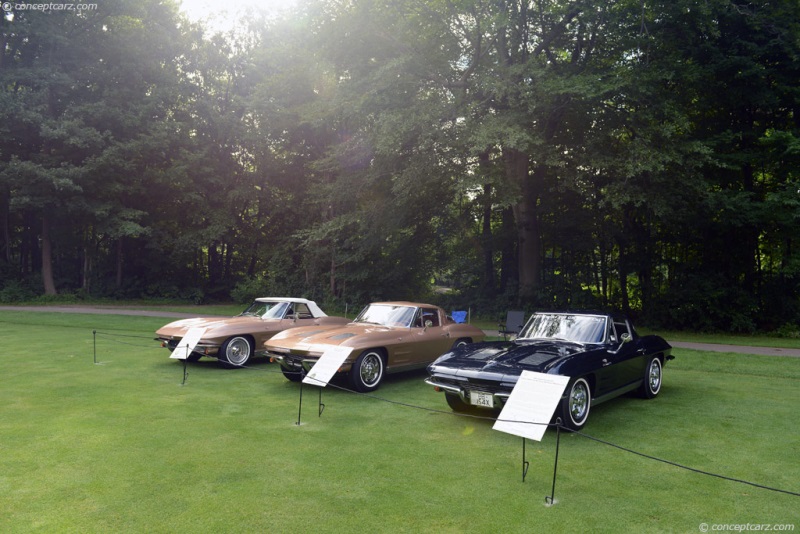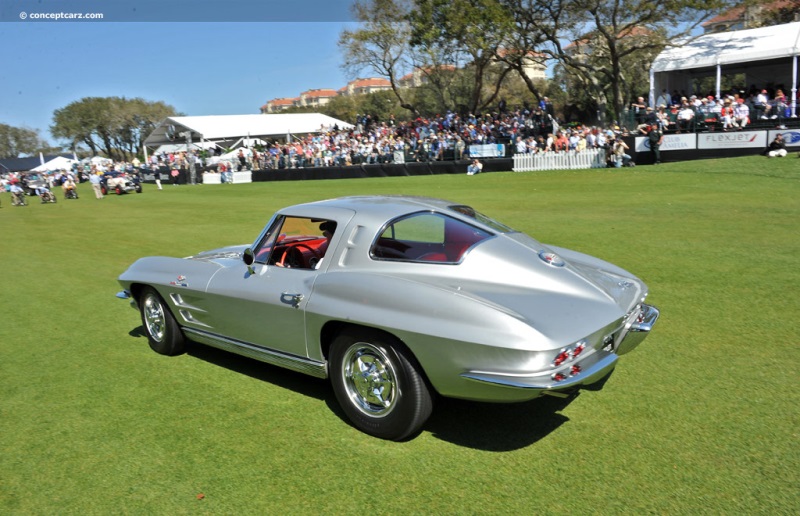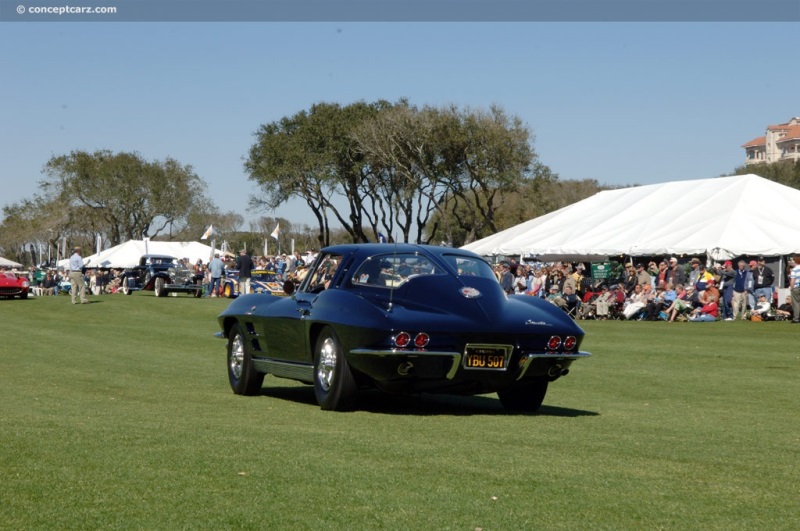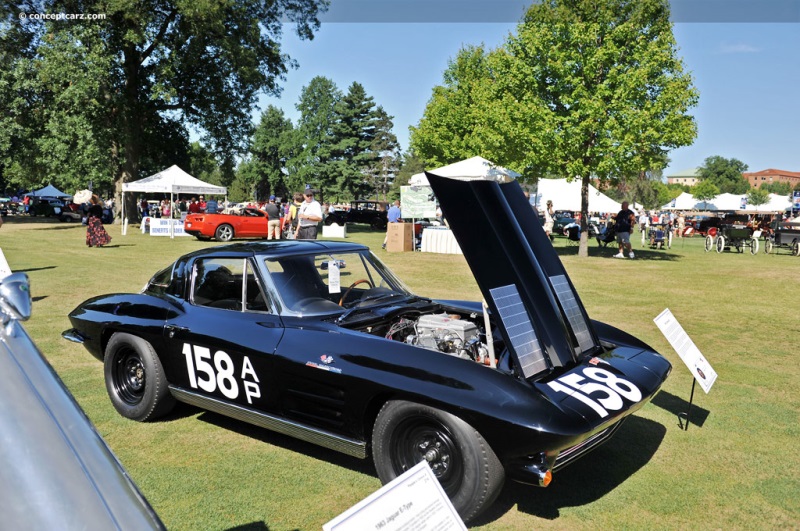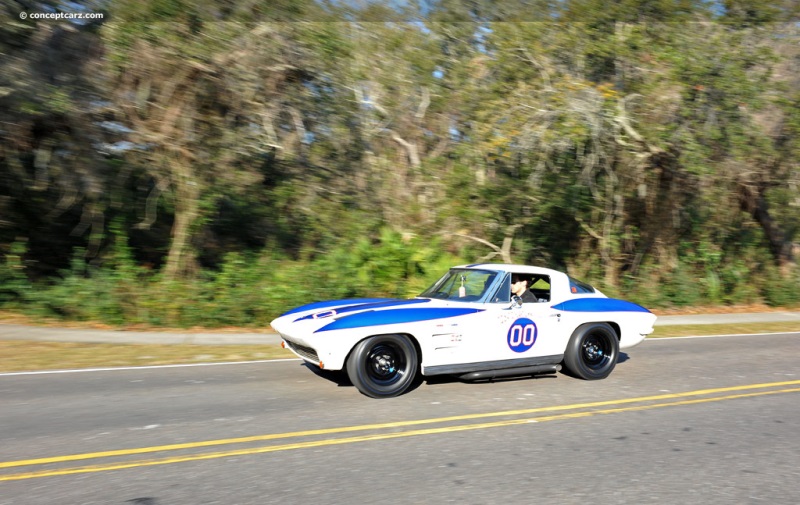The Chevrolet Corvette was brought to market late in 1953, equipped with inadequate brakes, an anemic six-cylinder engine, a two-speed Powerglide combination, and an antiquated suspension and steering system. Its sports car appearance was certainly not backed by performance credentials. This all changed, however, within a few years through the efforts of Zora Duntov, John Fitch, Dick Thompson, Ed Cole, and Frank Burrell.
Fastback Coupe
View info and historyBy selecting the correct boxes on the options list, buyers could receive a solid lifter, fuel-inject V8, four-speed manual transmission, race-tuned suspension, heavy-duty brakes, and a myriad of other performance components. The Corvette could be transformed from a road-going vehicle to a proper track-ready machine straight from the showroom floor. The Fiberglass-bodied Corvette quickly grew into a dominant force in production-based road racing in America as the 1950s progressed, and between 1956 and 1960, Dick Thompson, J.E. Rose, Jim Jeffords, and Bob Johnson scored seven SCCA national titles with the Corvette.1963 was the only year for the 'split-window' body style of the Chevrolet Corvette and for the first time, 'America's sports car' was available as a Coupe as well as a Roadster. The new 'Stingray' design, credited to Bill Mitchell and Pete Brock, was a true fastback, notable for the unique divided rear window, was praised for its appearance but criticized for its detrimental rearward vision. After just one year, that feature was replaced with a single-piece backlight. The 'C2' platform, as it would later be known, was a major advancement from earlier Corvettes, and it was designed from a clean sheet of paper to be a proper sports car rather than a mere styling exercise. The new Sting Ray Coupe featured 'wind split' indentations on the front fenders behind the wheel openings and ribbed rocker panels, hidden, retractable headlights, and aircraft-type doors that cut deeply into the roof to ease entry and exit. The interior was completely redesigned as well with a more modern look but with a more traditional gauge layout. Beneath the fiberglass shell was a new independent rear axle with transverse leaf springs, control arms, multiple links, double-jointed half-shafts, and trailing radius rods.The base 327 cubic-inch V8 delivered 250 horsepower while the Rochester fuel-injected, solid-lifter L84 327 cubic-inch version boosted output to 360 bhp. This marked the first time an American production car had a higher horsepower figure than engine displacement. A three-speed manual transmission was standard, but options included a four-speed manual, a Positraction rear end, and a variety of rear axle ratios. The Stingray could be ordered in any of seven exterior colors. High-performance extras also returned from 1962, including metallic brake linings and Positraction, but the big news the Regular Production Option (RPO) Z06 Special Performance Equipment package for the coupe. This special group of options had been selected through extensive testing and racing by Zora Arkus-Duntov, creating an uncompromising factory race car. It allowed Chevrolet to circumvent GM's self-imposed ban on factory-sponsored racing or support, by offering all the performance components as optional equipment. 
Fastback Coupe
Chassis #: 30837S100895
Auction entries : 1The Z06 Special Performance Equipment package included the L84 327/360 HP fuel-injected V-8 and heavy-duty Muncie M20 4-speed manual transmission, power brakes with dual circuit master cylinder, metallic brake shoes, backing plate air scoops and heavy-duty suspension. Special heavy duty-springs, shocks and a front sway bar replaced the standard pieces to meet the rigors of high-speed competition. The upgrades to the brakes were perhaps the biggest improvement, mounted on ventilated backing plates fed by rubber 'elephant-ear' scoops, the Z06's large cast-iron finned drums contained oversized, segmented, sintered metallic linings, forward self-adjusters and unique 24-blade internal cooling fans. The entire operation was controlled by a unique dual-circuit Kelsey-Hayes master cylinder and Delco-Moraine vacuum booster controlled the entire operation. A total of 199 examples received the Z06 package and 63 were fitted with the N03 36.5-gallon competition fuel tank with oversized filler cap and neck for quick pit stops perfect for longer race tracks like Daytona or Sebring. Cars equipped with the larger fuel tanks were known as the 'big tank' and this option was dropped in December of 1962 in order to make the Z06 package available in convertibles, which could not accept it. The knock-off wheels were abruptly canceled when it was discovered that early production units leaked air. The Z06 Package complimented the styling and handling of the all-new Corvette, offering an impressive performance intended for the racing circuit. With a price of $1,818.45, the Z06 package added nearly half the base price to the Corvette, but for the hardcore racer, it was worth every penny.
by Daniel Vaughan | Aug 2007
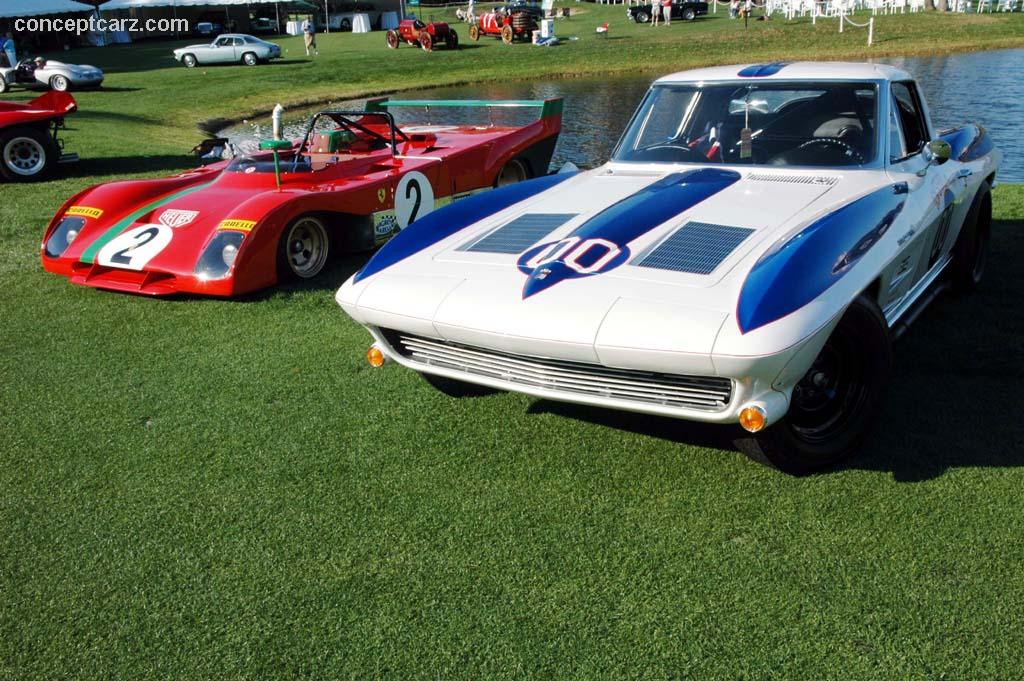
Fastback Coupe
View info and history
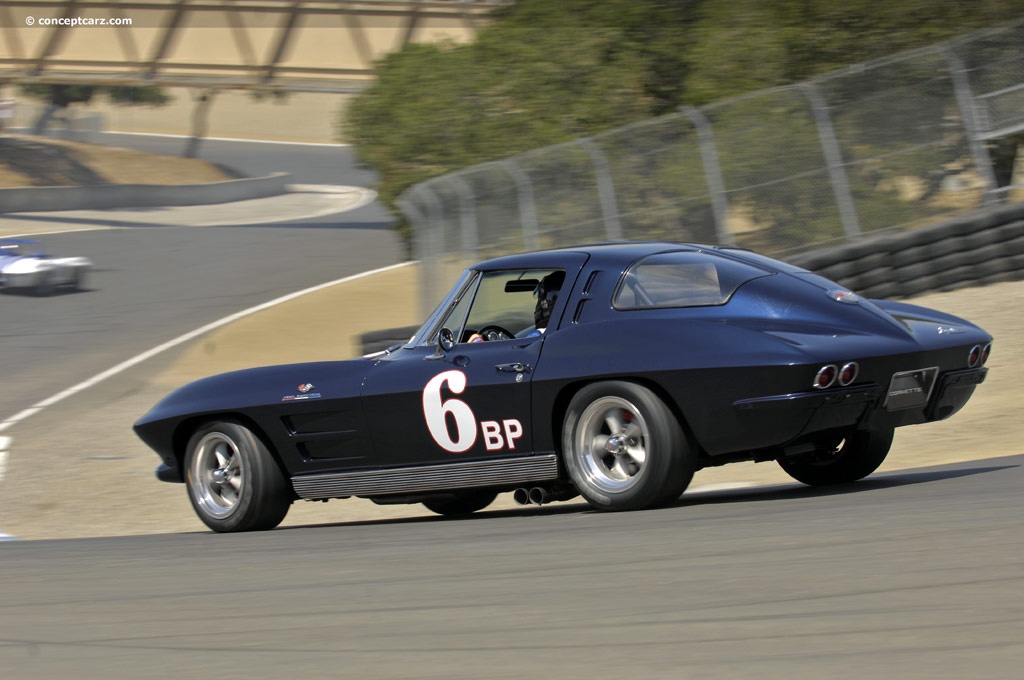
Fastback Coupe
Chassis #: 30837S100895
Auction entries : 1
by Daniel Vaughan | Aug 2007
Related Reading : Chevrolet Corvette C2 History
In 1953 the Corvette was debuted at the Motorama display at the Waldorf Astoria hotel in New York City. It was conceived by Harley J. Earl. It was a two seat convertible built by GM aimed at capturing the small car market from manufacturers like Jaguar and MG. All 1953 Corvettes were convertibles with black canvas tops, Polo white with red interiors, and built by hand. Power came from an existing....
Continue Reading >>
Continue Reading >>
Related Reading : Chevrolet Corvette History
Very few vehicles elicit the same kind of satisfaction as the Chevrolet Corvette. The Vette is a symbol of childhood dreams and grown-up triumph. The only true American Sports car, this car stands for excellence and became an icon as a high-performance and dynamic sports vehicle. First introduced in January of 1953, the Corvette has only become more renowned as the years drift by. Undergoing many....
Continue Reading >>
Continue Reading >>
Chevrolet Corvette Roars Into Its 60th Year
On June 30, 1953, the first of a new kind of Chevrolet – indeed, a new kind of American car – rolled off an assembly line in Flint, Mich. The car had only two seats. There were no roll-up windows, or exterior door handles, for that matter. Its body wasnt stamped from steel but, rather, molded from reinforced fiberglass. While the postwar Baby Boom was in full swing, this was definitely not....
Continue Reading >>
Continue Reading >>
Corvette's Chassis Innovations Refined on the Race Track
Its been said that racing improves the breed, and when it comes to the Chevrolet Corvette, nearly six decades of checkered flags are the proof. As Corvette marks its 60th anniversary in 2013, the design of the chassis, suspension and other drivetrain features are rooted in the rigors of competition. Candidly, Corvette was not a high-performance car until Zora Arkus-Duntov fitted it with a V-8,....
Continue Reading >>
Continue Reading >>
Chevrolet puts a groove into your ride
Hot summer day… roof top down… wind in your hair … smile in your face… and Little Red Corvette cranked up to its loudest setting. Theres nothing like music in the car to make a journey really fly by. But, did you know that, aside from Princes classic hit, more than 600 songs across all genres and multiple generations mention Chevrolet, Chevy or the name of a Chevrolet vehicle in their....
Continue Reading >>
Continue Reading >>
Similar Vehicles
Similarly Sized Vehicles
from 1963
Chevrolet Monthly Sales Volume
March 2023
398,141
1963 Chevrolet Corvette Z06 Vehicle Profiles
Recent Vehicle Additions
Related Automotive News

Corvette Grand Sport's Racing Legacy On and Off the Track
1960 – Urged by Zora Arkus-Duntov, Corvettes first chief engineer, racer Briggs Cunningham entered three mostly stock Corvettes in the 24 Hours of Le Mans – each powered by the innovative 283 Fuelie mechanically fuel-injected small block V8...
Chip Ganassi Feted by Racing Elite at IMRRC Award Dinner
CORNING, N.Y. (Aug. 8, 2014) - A number of communities came together on Thursday night to honor race team owner Chip Ganassi at the Corning (N.Y.) Museum of Glass. They included the racing communities of IndyCar, Sports Car and NASCAR, as well...

HURLEY HAYWOOD HONORED WITH RRDC'S 2014 PHIL HILL AWARD
DAYTONA BEACH, Fla. (Jan. 24, 2014) - Hurley Haywood, winner of more endurance classics than any other driver in racing history, was honored by the Road Racing Drivers Club with the 2014 Phil Hill Award. RRDC president Bobby Rahal presented Haywood...
RRDC VOTES IN 37 NEW MEMBERS FOR 2013
HILLIARD, Ohio (Nov. 7, 2013) - Thirty-seven race-car drivers and motorsports professionals have been voted into the Road Racing Drivers Club in 2013. The group includes 13 Regular Members from the open-wheel and sports-car racing ranks, 20 Associate...

Celebrating 60 Years of Corvette History at Rolex Monterey Motorsports Reunion
Rarely Seen Corvettes Assemble for Exhibition August 16-19 in Monterey
Monterey, Calif., July 9, 2013 — There are Corvettes, and then there are The Corvettes. Recognizing the power, performance and durability that has made Corvette Ame...


































